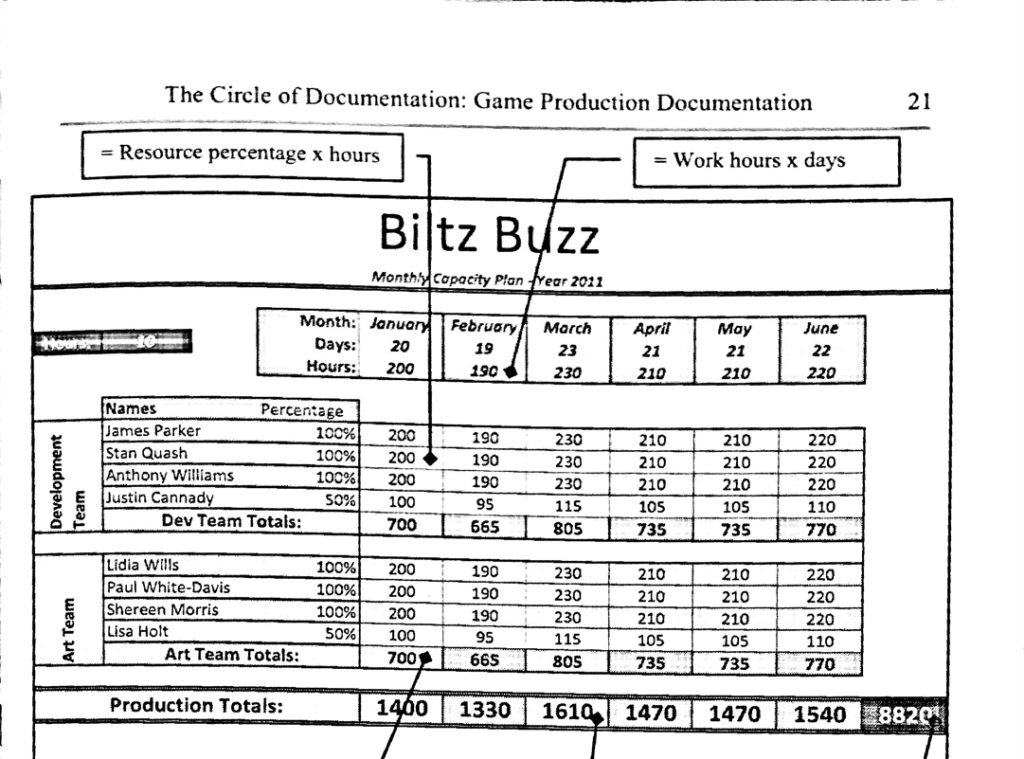
Jan 31, 2018
Review
People, Planning, and Production for Video Game Development is a small booklet (41 pages) that nonetheless has valuable information for people who want to produce their first game or are looking to make the jump to production. If you are an experienced producer, you might still obtain some value from looking at the detailed spreadsheets mock-ups the writer introduces.
Book self-description: This book is a one-stop shop for video game production. It has tools, techniques, and philosophies to aid any student, new producer, or game professional. The many thoughts and ideas in this book will give the reader a number of different vantage points on video game production, in order to address each reader’s unique needs. It allows for flexibility in the reader’s game development life cycle while still laying out proper guidelines for management.

A quick read
Pros and Cons
Cons:
The author’s heavy emphasis on documentation might lead an amateur producer to conduct a waterfall process when Agile might have been better. Furthermore, the example spreadsheets and power plants assigned tasks directly to resources and other non-agile practices. A quick introduction to agile methodologies, differences to waterfall, and when it is better to use one or the other might have been enough for a small reference book such as this. I consider this to be a missed opportunity for an author that it’s a Certified Scrum Professional (CSP).
I also disagree with the game production cycle explanation provided by the author. By describing pre-production as a purely planning phase, producers reinforce “the pre-production problem” as defined by the extra credits team, whereby developers jump right into creating a game that ultimately might not be fun or interesting. Post-production is also significantly reduced, only starting when the game is already close to shipping. These two changes combined make a waterfall production process easier to capture in MS Project (the author’s preferred project planning tool) but fail to capture the dependencies between the different phases and non-development work (i.e., localization, marketing, etc.) that a producer must do.
Finally, the book mentions a few pieces of industry jargon that are not explained anywhere. As an example, the book mentions “Keep bug count low while fixing “A” & “B” priority bugs immediately” while never explaining what class A and B bugs means.
I recommend you skip the production cycle section altogether (pages 9-10) and read my article on the topic instead. I explain both Agile and waterfall production, game development milestones and even what class A and B bugs mean inside the article.
Pros:
The book is explicit on the importance of teamwork and clear communication between all the different stakeholders for the success of the game. Moreover, the author included a section on informing your boss and managing its expectation, even including a sample on page report. This practice is an often forgotten but critical aspect of project management regardless of the methodology used.
Additionally, the mention of team quality testing it’s a positive thing for any inexperienced producer. Solving bugs as they are found increases confidence that the game will be ready at the target date. Thus, avoiding the infamous pre-release crunch, where QA and developers race to find and solve bugs desperately trying to have a stable game ready before the release date.
The real reason I recommend this book is the numerous and well-explained spreadsheet examples. The author goes the extra mile here, not only showing a production plan but more exotic documents such as a resource matrix and a cut list. I also appreciate the quality test list, as someone who has coordinated numerous functionality tests outside the gaming industry, I can attest how useful a well-detailed task list with a pass or fail status can be to determine product readiness.

One of the many well documented tables within the book
Verdict
People, Planning, and Production for Video Game Development is an excellent source of project management material specific to video game production. Its small size makes it ideal for people wanting to get as much value as possible with as little effort. However, it is relatively expensive given its size and has minor conceptual errors.

Get People Planning, and Production for Video Game Development in Amazon now.









